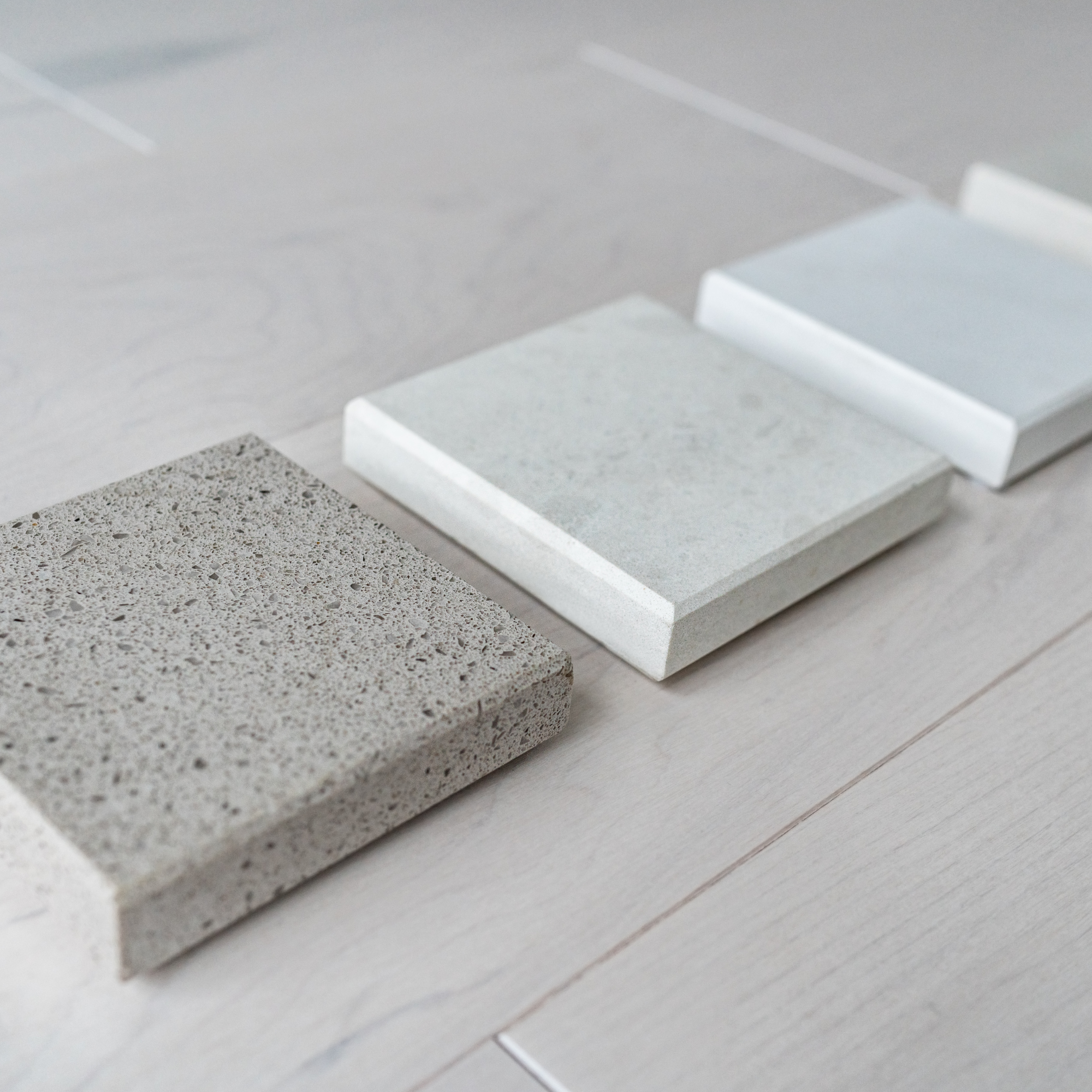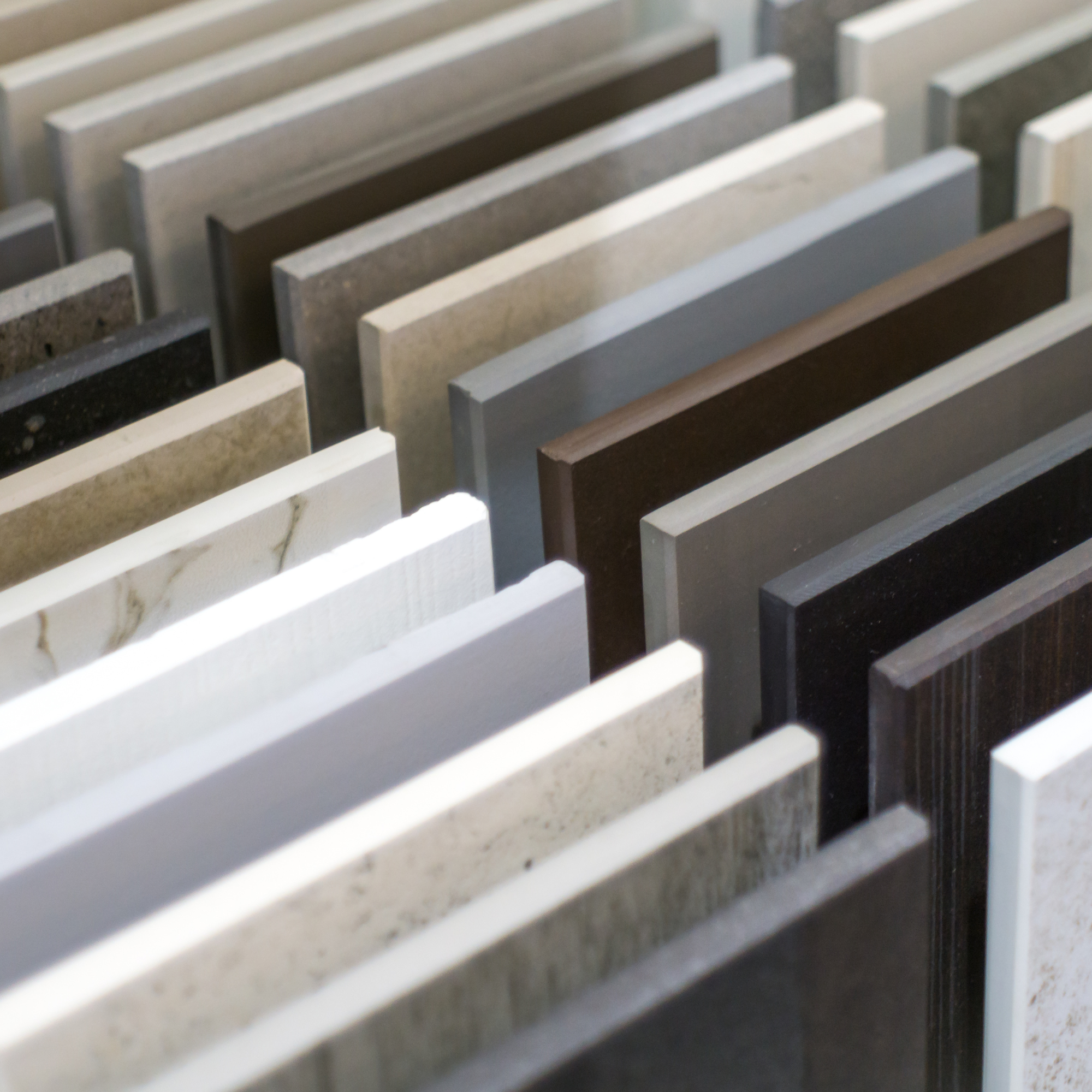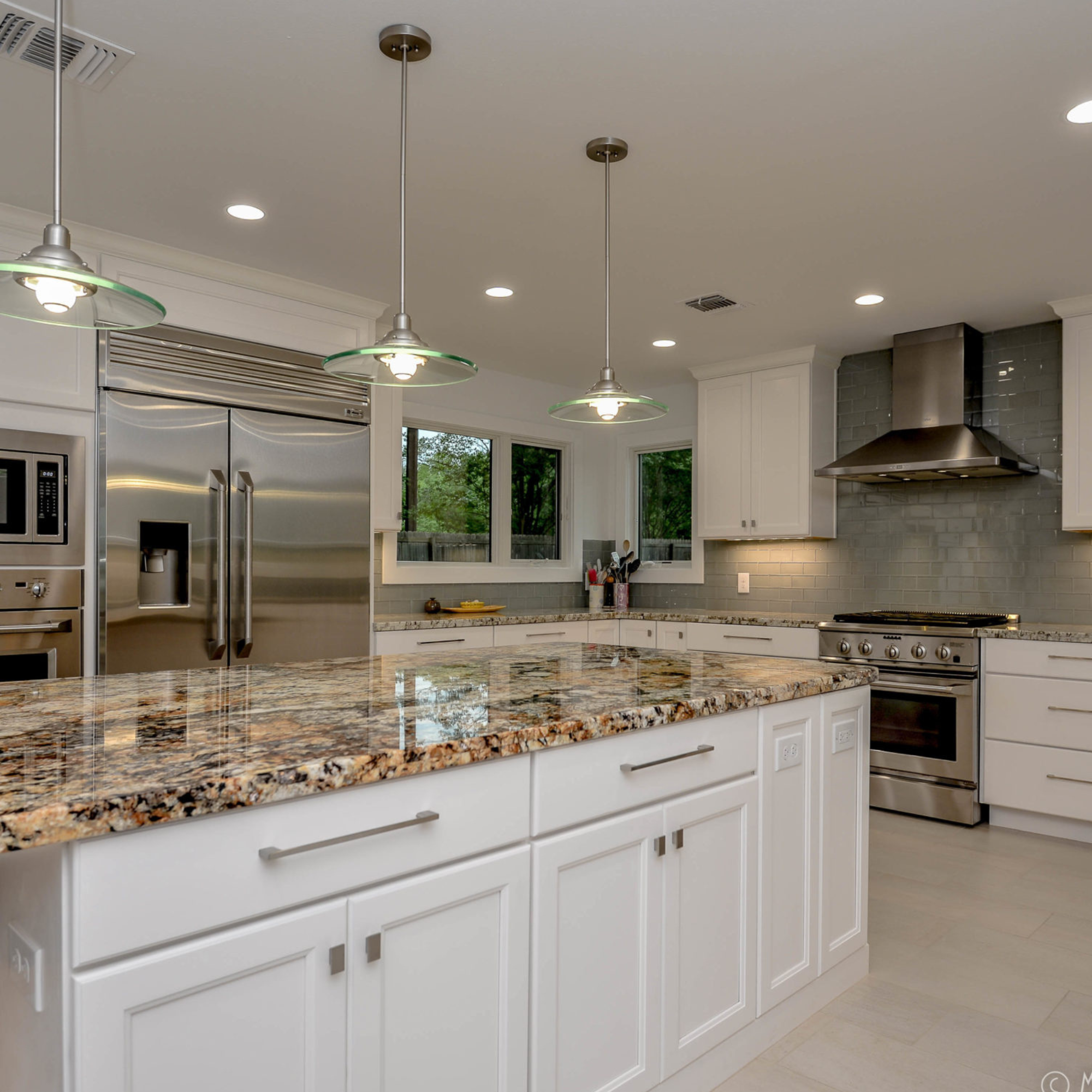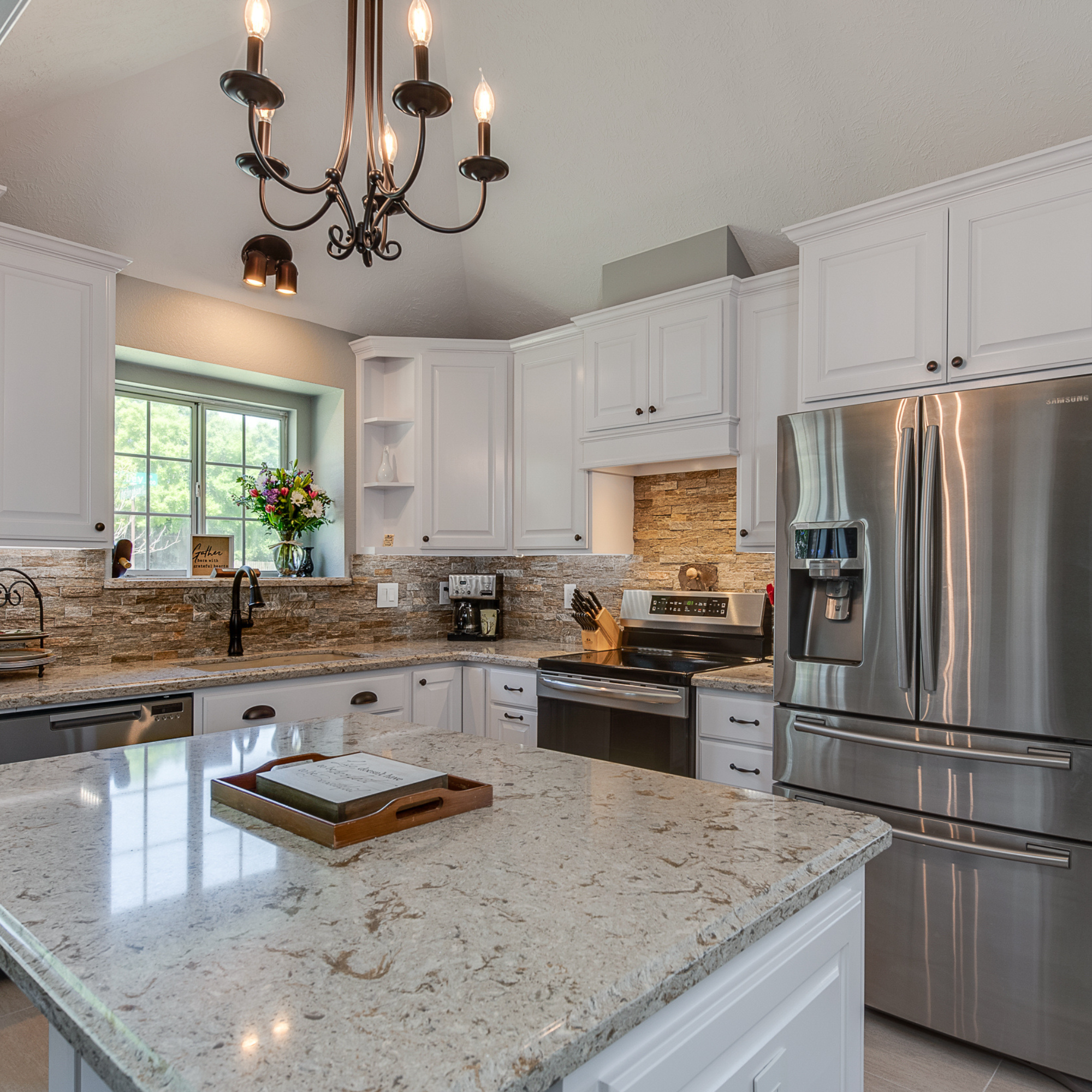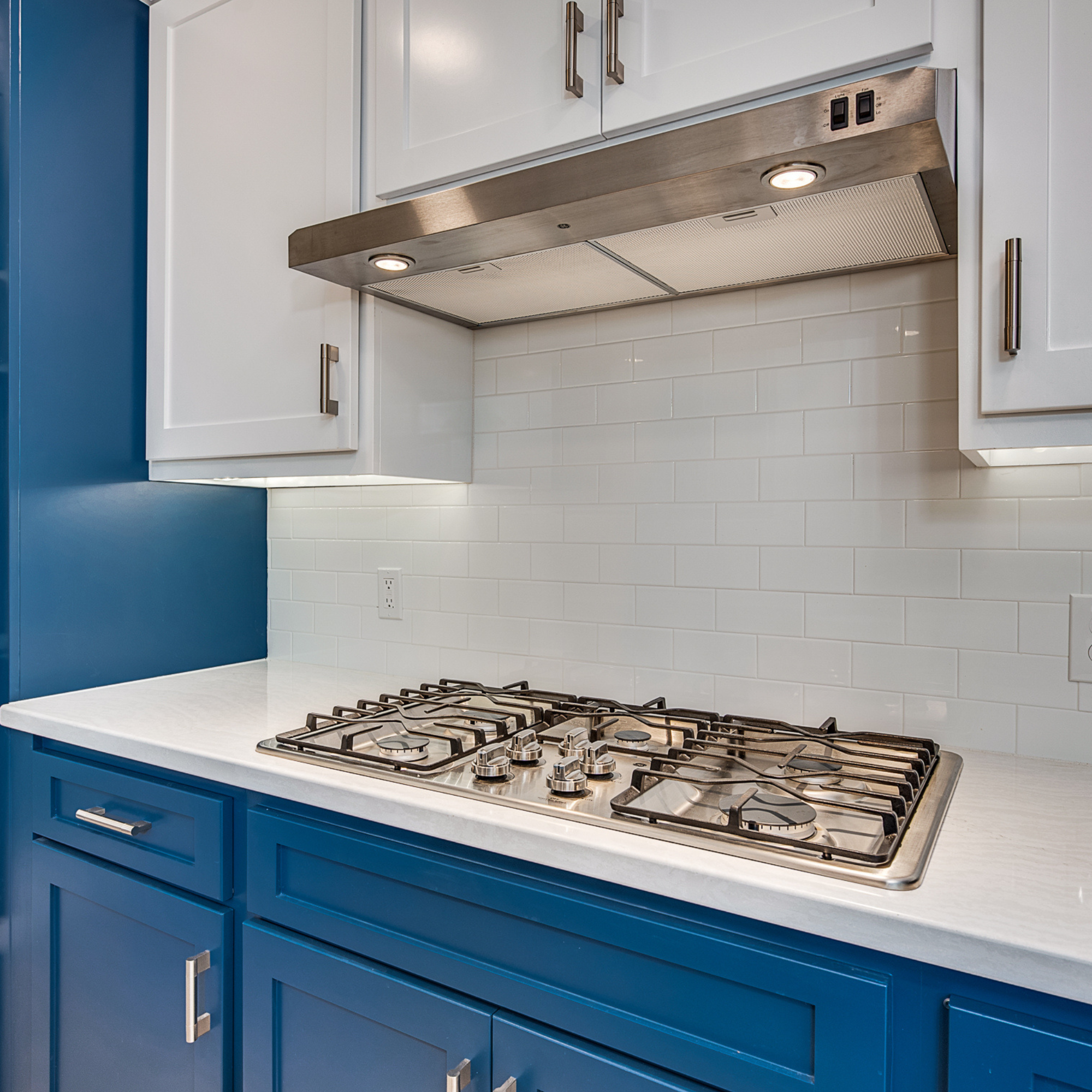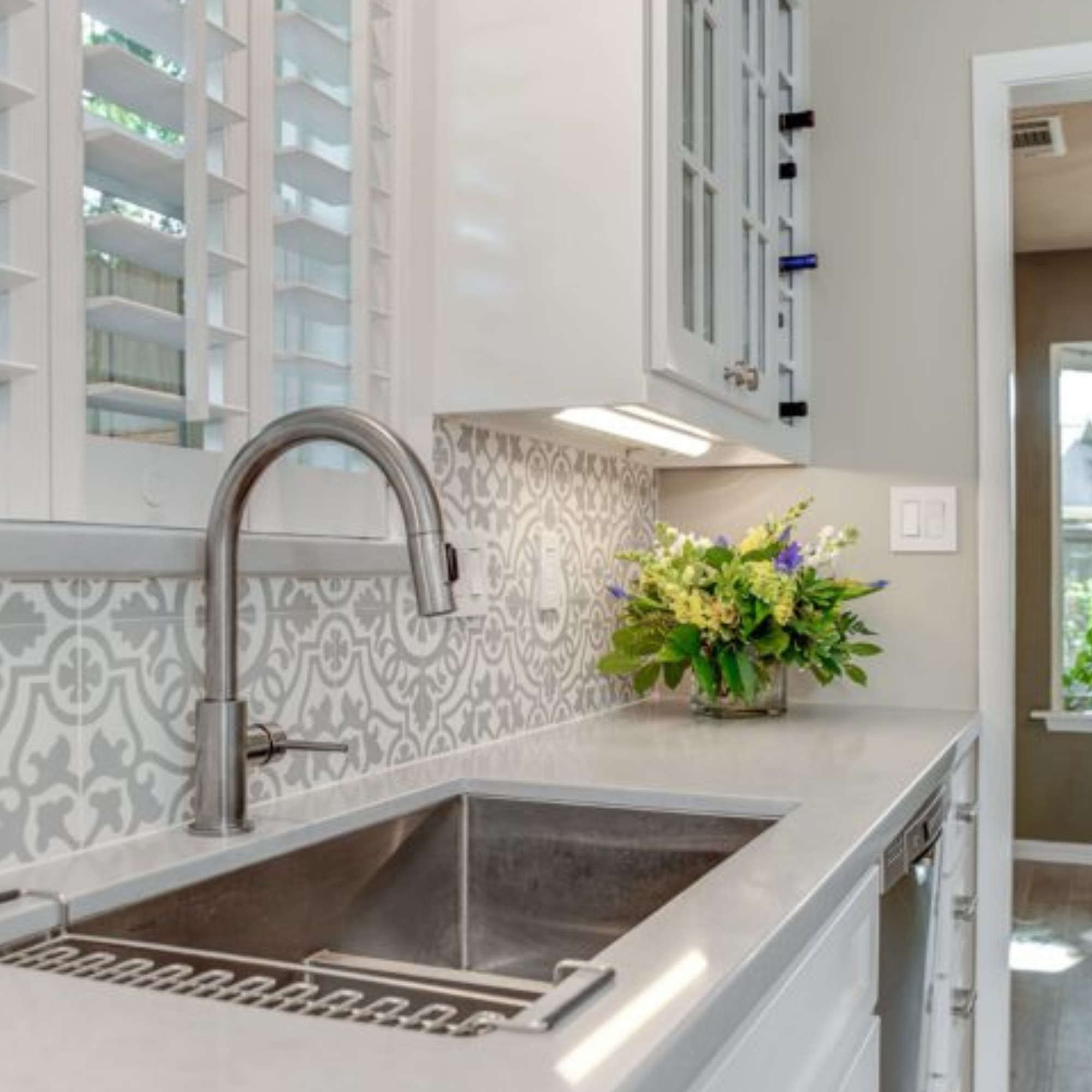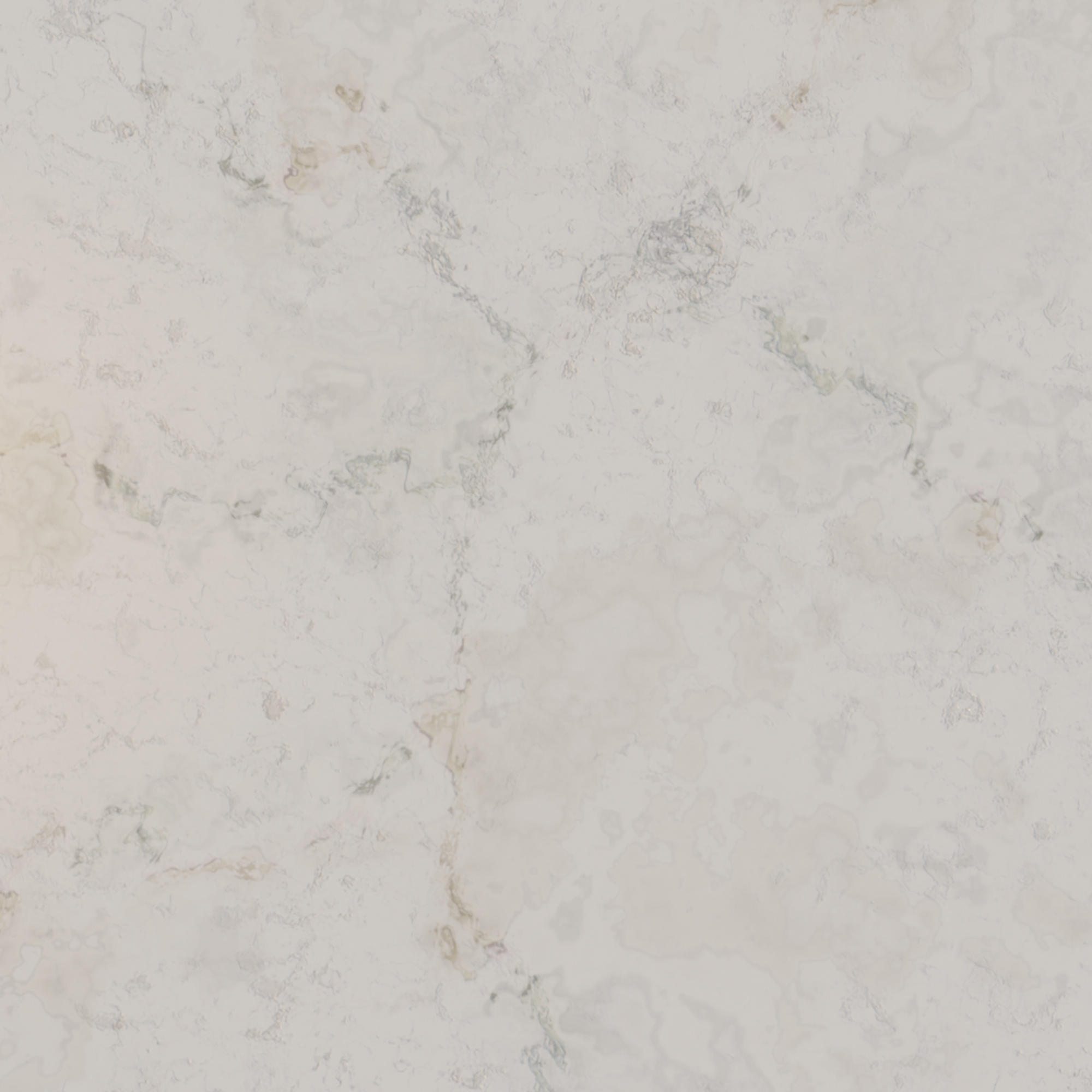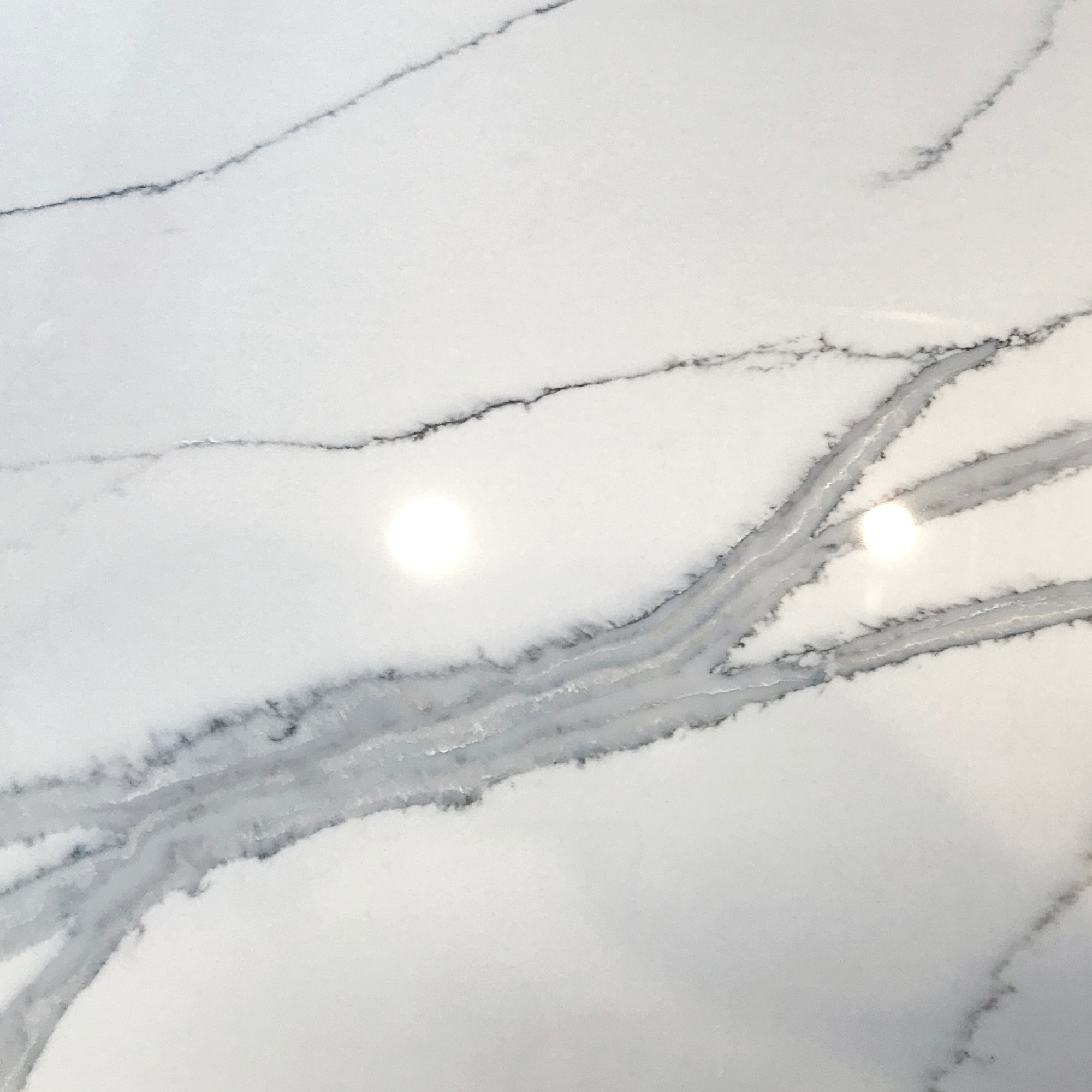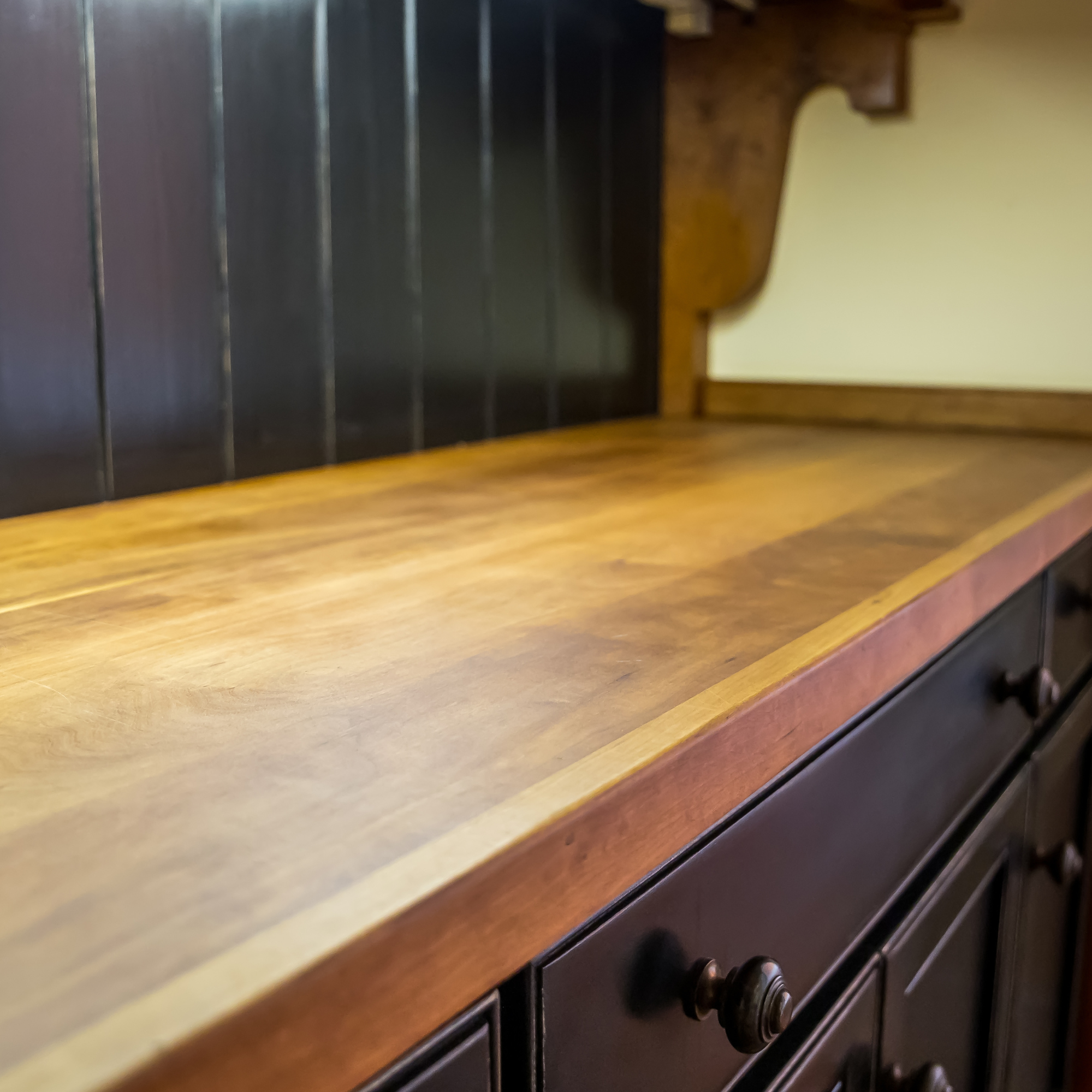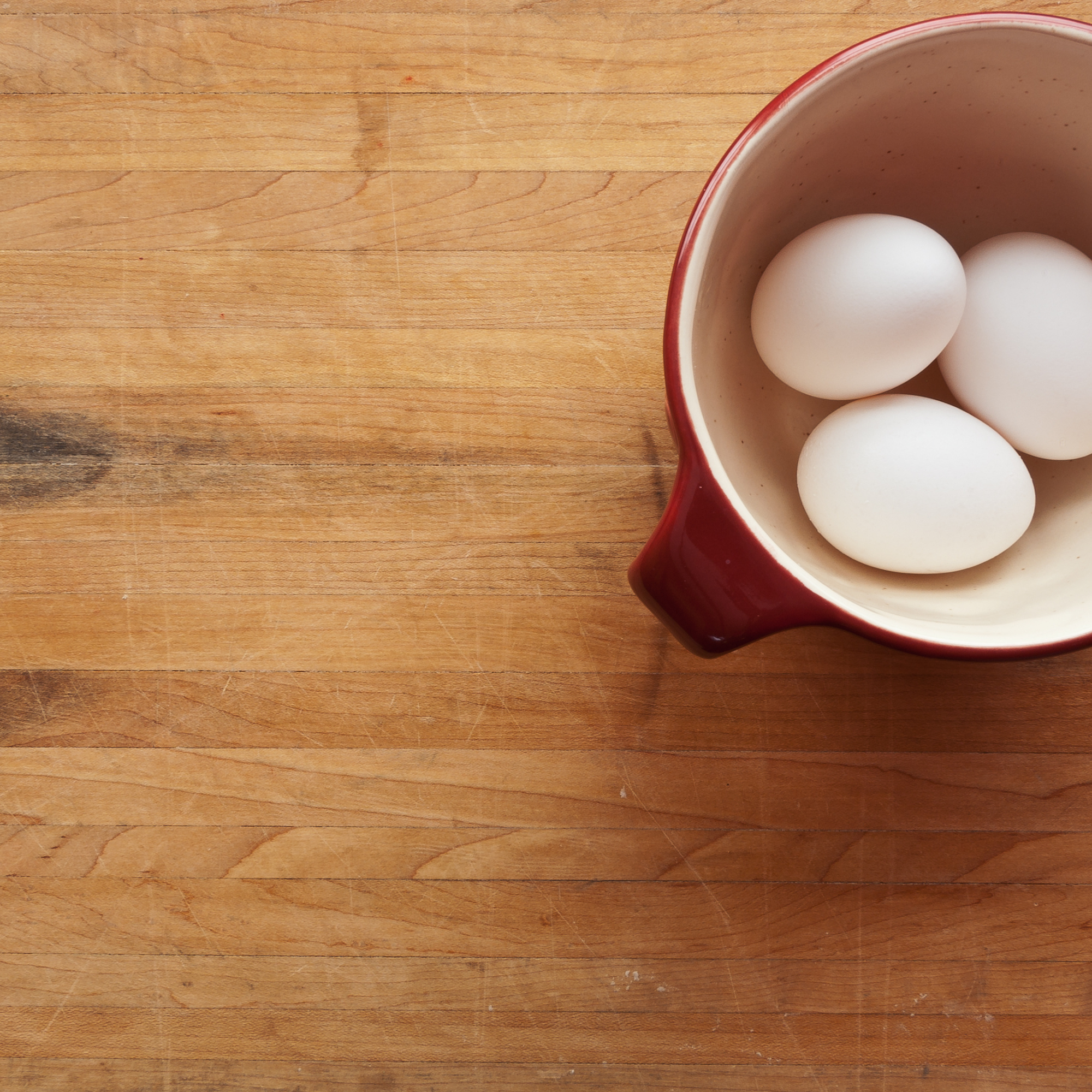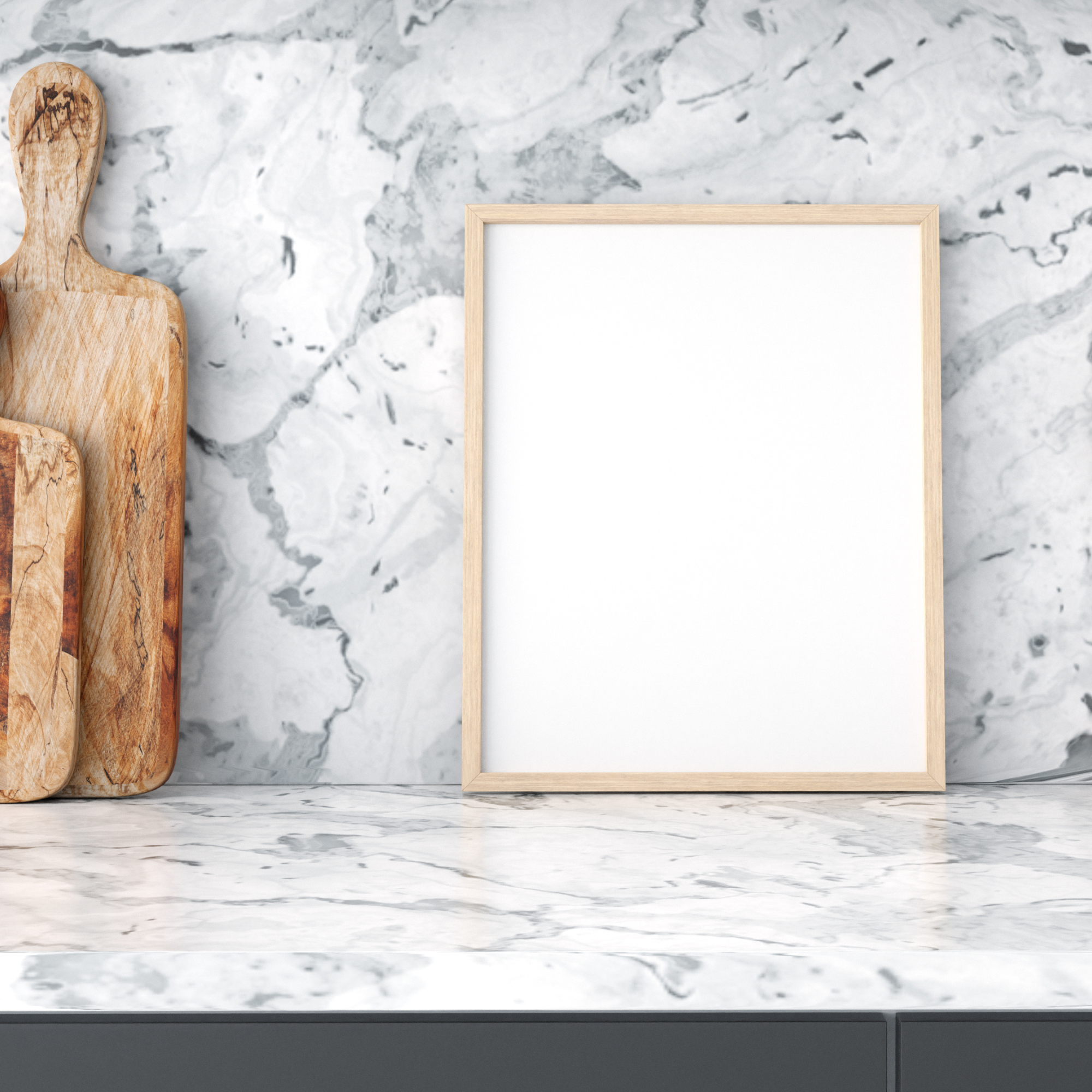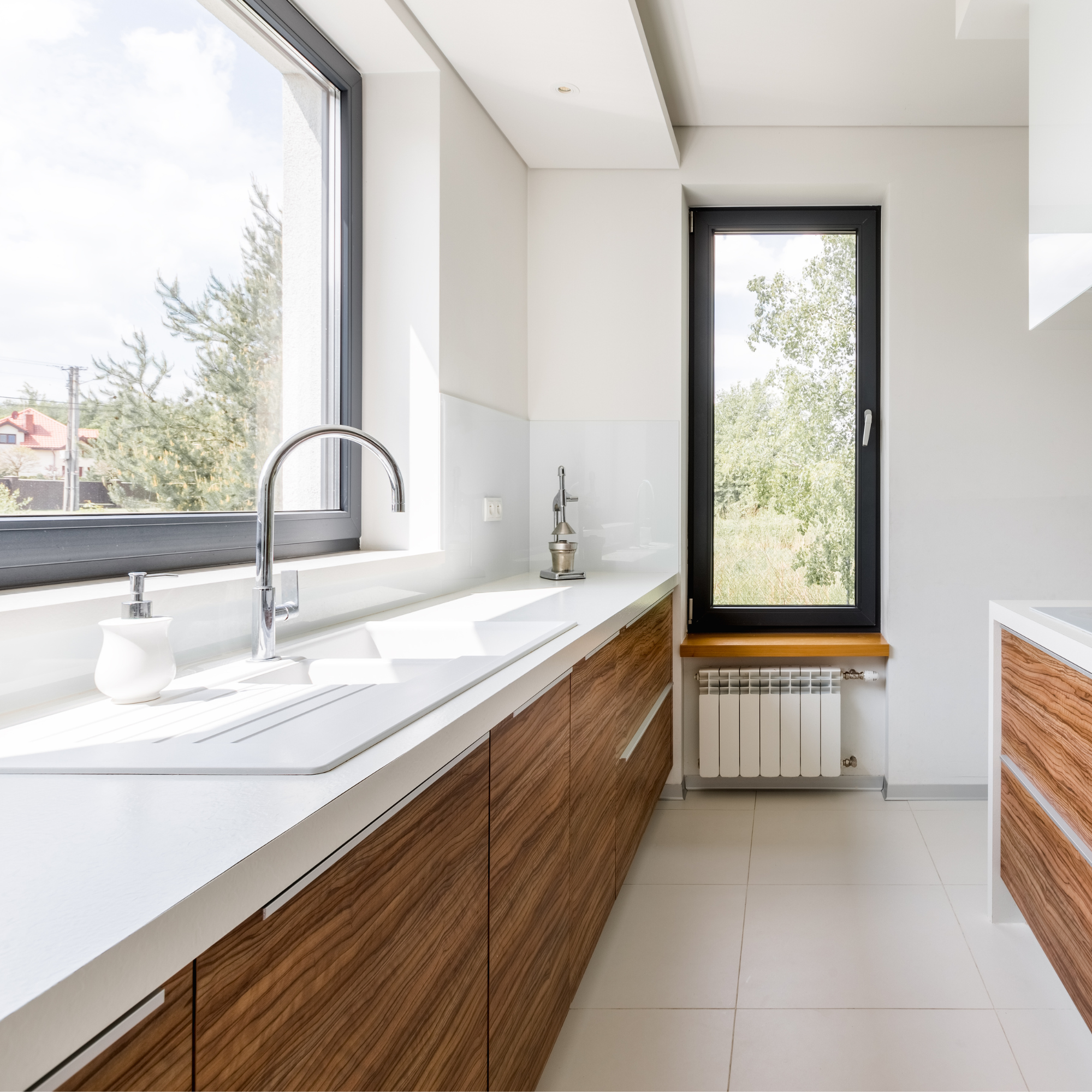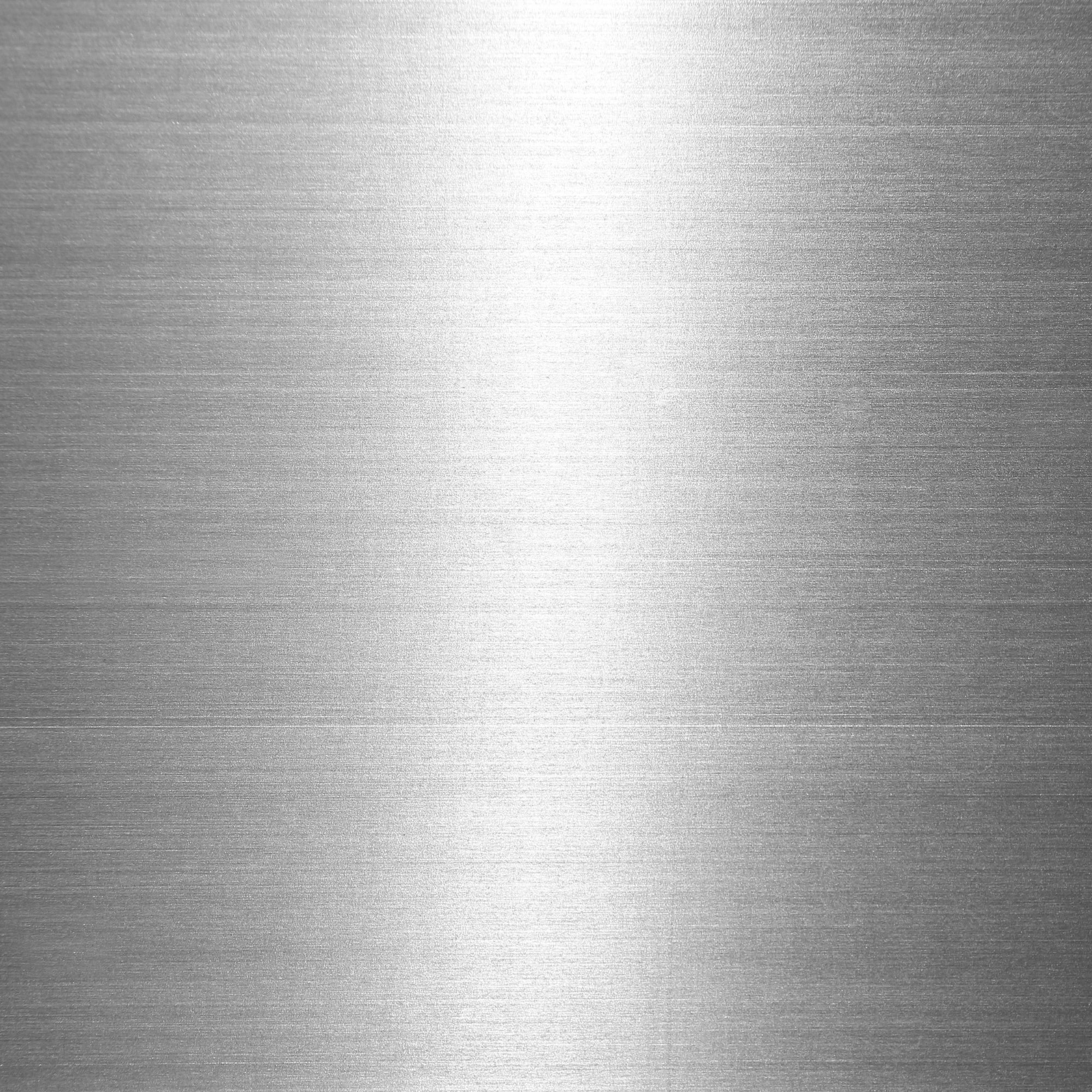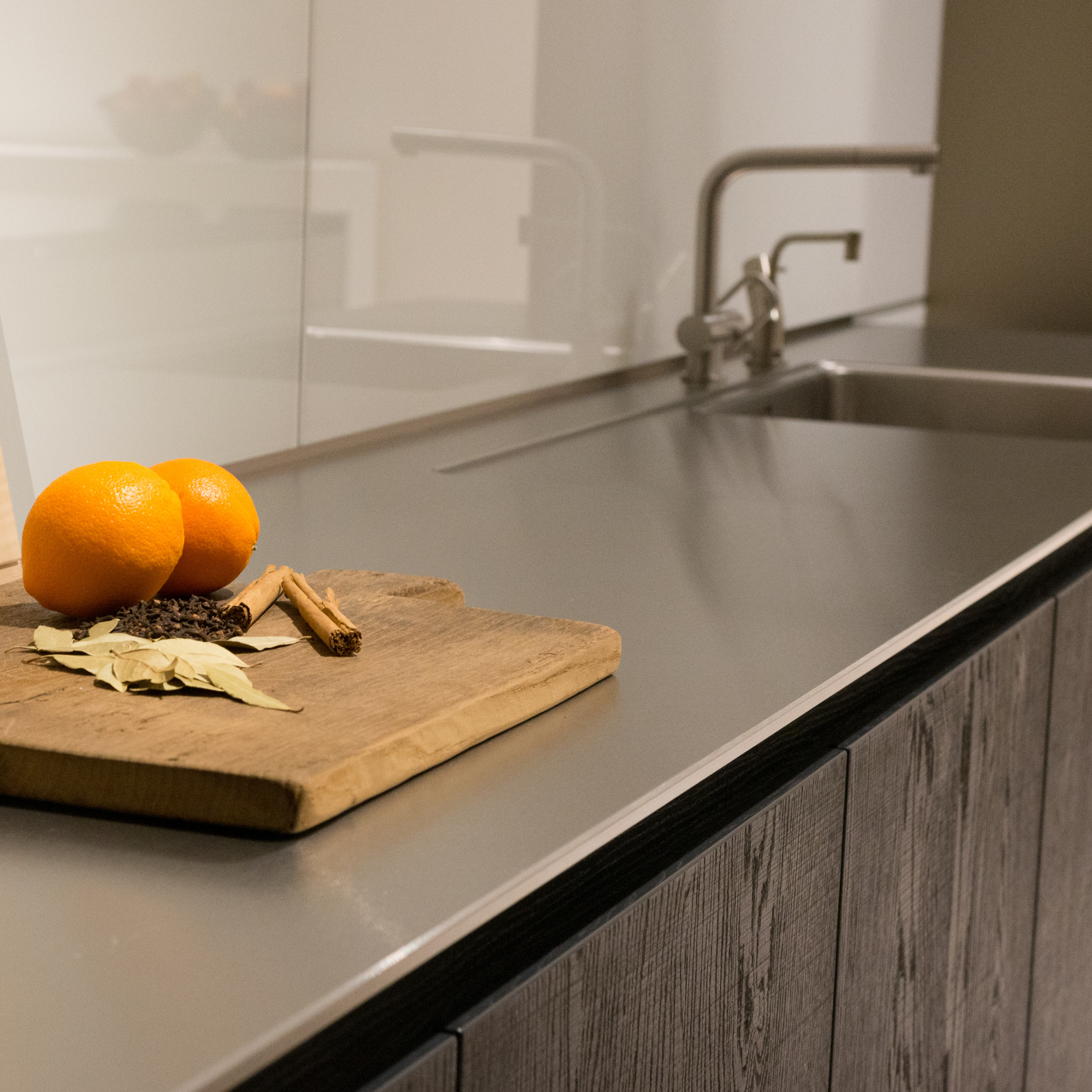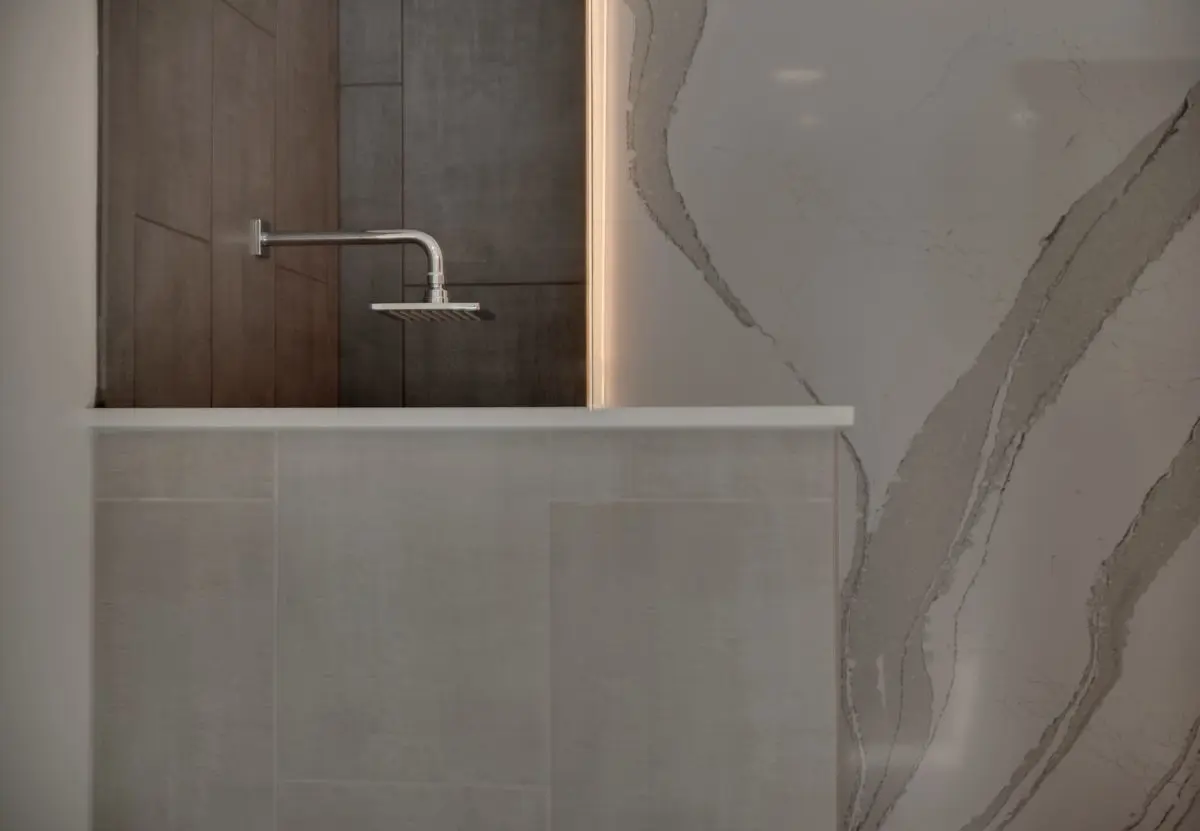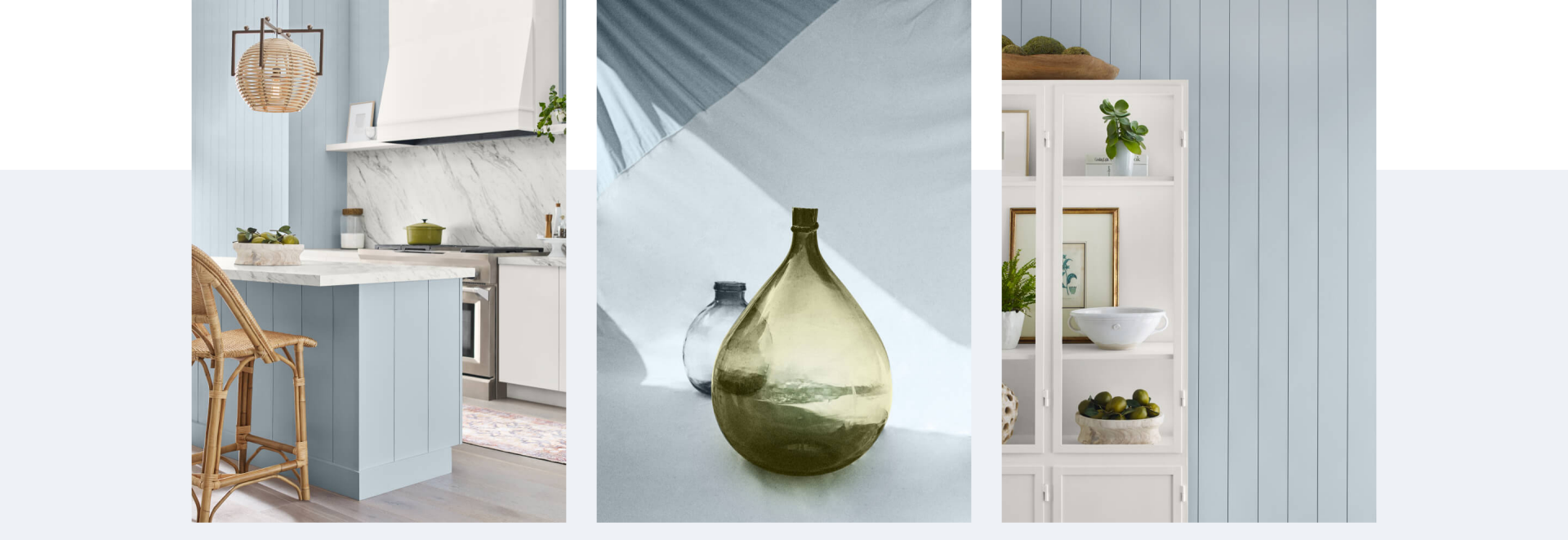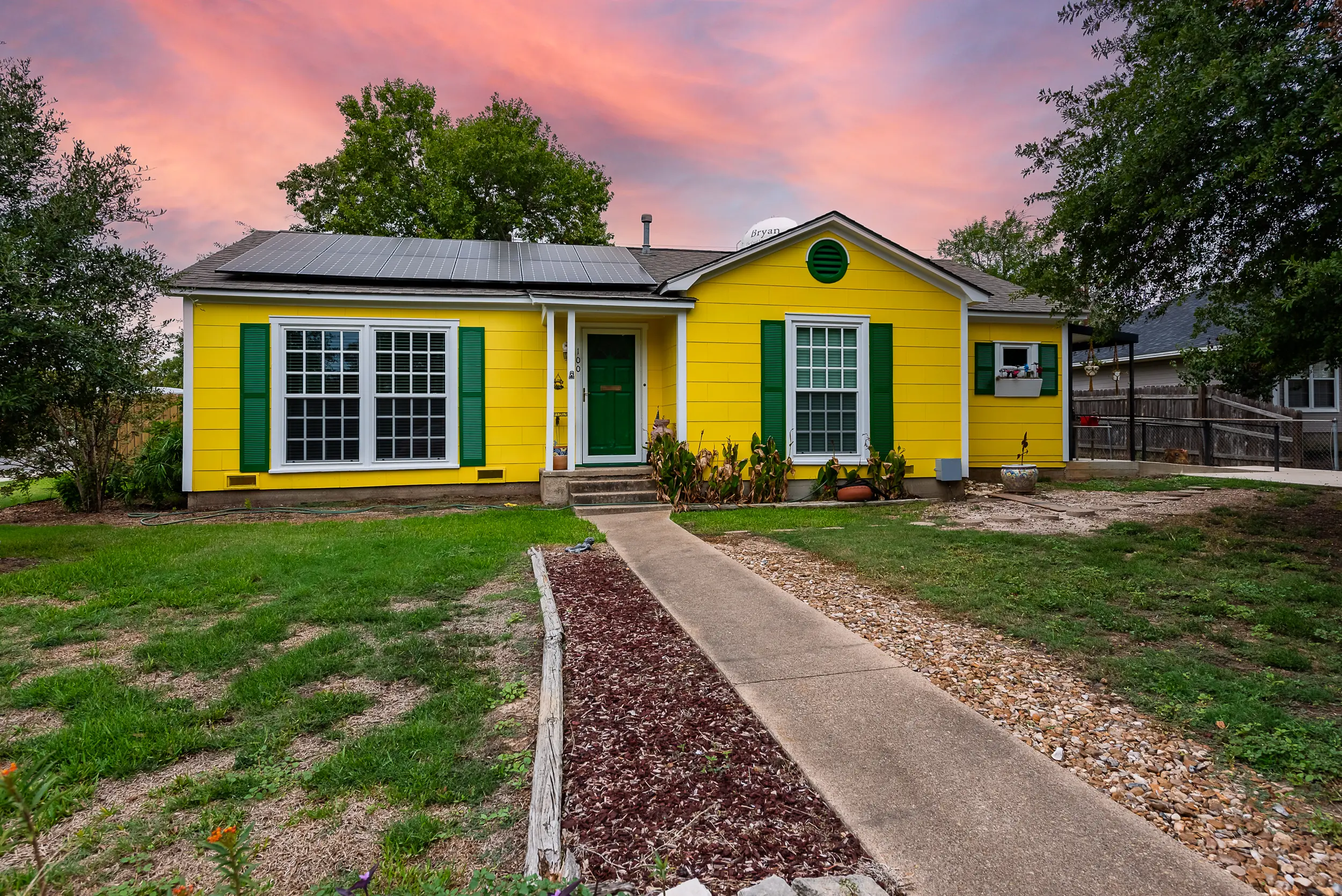Our designer, Preston McMath, is here to discuss a common dilemma when remodeling; what countertop should I choose?
One of the most common questions I get asked during kitchen or bathroom remodels is, “what material should I use for my countertops?” Truthfully, the answer varies quite a bit. There is no such thing as “the perfect countertop.” Each countertop material has pros and cons, so the right choice depends on your priorities and what is most important to you. Do you want the best-looking countertop? Perhaps marble is the right choice. Extreme durability? Butcher block may be it.
I will go through each of the most popular countertop materials and give you the pros and cons for each to hopefully give you some helpful information to guide you to the right countertop.
Granite:
Granite used to be all the rage in design. Everyone wanted granite countertops, whether black granite or New Venetian Gold. It has become increasingly less popular in recent years, though, as other more aesthetically pleasing options have been used more and more. Granite is a natural stone material that must be sourced from Egypt, Italy, and North American quarries. The most popular granite colors are Pearl White, Baltic Brown, New Venetian Gold, and Black.
One advantage of granite is its’ durability. Granite is scratch and crack-resistant. Granite does not scratch easily and will not crack if you accidentally drop something. Granite is also heat resistant, so hot pots and pans will not damage or discolor your countertop. However, using trivets with ANY countertop material is always recommended to protect your countertops and keep them looking good. An additional pro of granite is the price. Due to dwindling popularity, granite costs are lower than in years past. It is not the cheapest material but more affordable than ever.
The cons of granite start with the looks. Granite is now considered “dated” and isn’t widely used in design. So for those wanting their space to look modern and trendy, this isn’t the material for you. Another con is that granite does require regular maintenance. Because it is a natural material, it is porous (which means it can be stained), so it requires cleaning and regular sealing around once a year. This is a considerable drawback for busy families, as it can be easy for this maintenance to fall by the wayside.
Quartz:
Quartz has become wildly popular in recent years. People are drawn to the look of it, as it fits much better into the modern design that most people want. Quartz is manufactured using resin and stone and comes in various colors and patterns. The pros start with durability. Like granite, it is scratch and crack resistant. Because it is not a natural material, it is non-porous and will not stain. You won’t have to worry about quickly wiping up a wine or pasta sauce spill; your countertop will be okay.
Quartz is also overall heat resistant, but pots and pans that are too hot could risk scorching or discoloration. Lastly, quartz does not require sealing or regular maintenance, a huge advantage for many people who don’t want to worry about maintaining their countertops.
The cons of quartz are few, but they are notable. First, quartz is among the most expensive countertop materials, so that it could be unattainable depending on your budget. It is also not the most heat-resistant material, so always use a trivet to avoid heat damage. Finally, it can chip at the edges if you are not careful with heavy pots and pans. Most people, though, are willing and able to live with these disadvantages.
Marble:
Everyone loves the look of marble. It is clean, elegant, and modern. Nothing exudes luxury quite like marble. But, unfortunately, the pros of marble stop there. It is not an ideal material for countertops for many reasons.
The cons of marble are many. First, it is a very soft stone, susceptible to scratches, dents, and cracks. To keep marble looking good, you must be very careful with it. Marble is also an incredibly porous surface. It stains easily and stains quickly, even when it is sealed. A small spill of red wine sitting on it for seconds can permanently cause irreparable damage and stain your pristine countertop.
And then there is the issue of cost- it is wildly expensive. Marble is less readily available than granite, and its luxurious nature increases the price. It is the most expensive countertop material on the market, and you are paying a premium for a poor-quality product. I never recommend marble to any of my clients because of this. If clients like the look of marble, I guide them to quartz alternatives, as numerous quartz countertops look precisely like marble but without all the pitfalls of marble.
Butcher Block:
Butcher block is also becoming increasingly popular in the world of design. People are drawn to it for a handful of reasons. The first is the cost. It is among the cheapest countertop materials out there and is readily available. It is also very customizable, as it can be stained (or painted) in any color to make it seamlessly into your space’s color palette.
However, butcher block also has many downsides. It is not very durable. It is prone to water damage, heat damage, scratching, denting, stains, and warping. That is a lot to worry about, and many people do not want to stress that much about their countertops. Butcher block also requires frequent maintenance. You should reapply the oil sealing every few months to keep it clean, sanitary, and safe. The only times I will recommend butcher block to clients is when it fits a particular design style they are going for or if we are working on a very tight budget.
Porcelain:
This material is relatively new to the market but is slowly becoming a popular option for people to consider. The advantages are plenty, starting with durability. It is very strong, scratch, dent, and heat resistant. You don’t have to worry about cutting on the countertops or putting a hot pan on them; it won’t discolor or scratch. Because it is manufactured, it is also non-porous and won’t stain.
Another huge advantage- it requires no maintenance. Just like with quartz, you don’t have to reseal it. Lastly, as with quartz, there are many colors and patterns to choose from. Many of them resemble stone or marble, so you get the aesthetic of marble or stone without all pitfalls of the actual material.
As promising of a product as it is, porcelain does have disadvantages that currently make it relatively unappealing. Just like with porcelain dishware or tile, it can break easily. This is only a problem during transit; it is durable once installed. It can sometimes take ordering the countertops 2-3 times before an unbroken countertop makes it to your home. Because this product is still new, the vast majority of countertop suppliers have yet to adopt the material and do not sell it, so it is not widely available yet and is not manufactured by many companies. Because of these reasons, I can’t quite recommend it to my clients just yet.
Stainless Steel:
This is one of the least common countertop materials for residential kitchens. Unless you are a professional chef, you won’t likely give this material a thought. However, it has some advantages you may want to consider. Stainless steel is very functional for a kitchen. It is heat, stain, and bacteria-resistant. Having a sanitary and durable material is very appealing to some people. It is also reasonably affordable, as it is a manufactured product that is readily available. And while it may not be the most aesthetic choice for your kitchen, it reflects light well and can brighten up the space.
There are a few cons to stainless steel, but they still should be factors in the decision. Stainless steel can be scratched and dented easily, so you must be careful when cooking. Stainless steel is also very susceptible to fingerprints. It can be tough to keep stainless steel looking clean. It is also less good-looking than many other materials available and only fits into one or two design styles. Finally, the look of stainless steel itself can turn people away from using this material for their countertops. I recommend something other than this to my clients, but there are certain instances where this would be a great choice.
When it comes to countertops, you have many options. The best option will vary from person to person, depending on their wants and needs.
My recommendation for 95% of my clients is Quartz. It provides the most pros with the fewest cons. However, quartz is not the “perfect” option nor the only one you should consider for your bathroom or kitchen. But for most people, it will both look great and function well. However, I do not think quartz will be the sort of “default” countertop material in the future. I believe once porcelain manufacturers can come up with a fix for the issues with fragility; porcelain could be “the perfect countertop.” It will have all the features people want with few, if any, of the cons. Be on the lookout for future porcelain countertops- they could be the next big thing in design.

